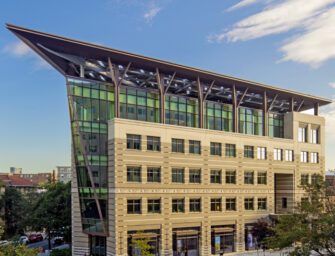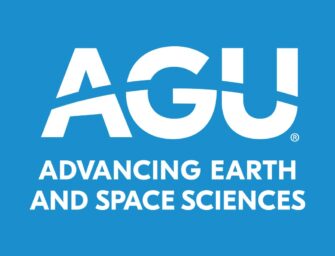AGU’s October 2021 board meeting: In person!
When I was invited to do our wrap-up for the board meeting that took place on Thursday and Friday, 7 and 8 October, I was a bit panicked. Previous wrap-ups I had witnessed for AGU Council meetings have included poetry and even live songs! Would I need a pair of tap shoes? And tap lessons? But then I decided to take one for the team: lower the bar a little, just do a regular wrap-up so it’s not so daunting for whoever is asked next.
One important thing to note about this meeting is that it was in person, in Washington, D.C., and yes, we got to have dinners together. Aside from the food (which is always wonderful with AGU), it was so great to see everyone. For me, and perhaps for others, this was a first return to work travel since March 2020. There was so much energy, and our meals together served as a reminder of the value of in-person meetings. It was a much-needed rejuvenation.
On to the meeting! On Thursday, we started with AGU President Susan Lozier’s call to order. We celebrated the fact that the 2021 Nobel Prize in Physics had been awarded to scientists working in climate change. I think we also need to recognize that of the 13 laureates this year, 12 were awarded to men (and this wasn’t an anomalous year)— which, for me, means that there is still much work to do in how we recognize members of the science community. Susan also noted the opportunity ahead of us to apply lessons learned from the pandemic to ongoing programs.
We then moved to a discussion of systems change and collective impact. Since the new strategic plan was set, we’ve been grappling with how to approach the new commitment to solution science and impact. We can’t just take the same approach with solutions that we have with discovery science, meaning we need to include more intentional efforts in addition to from-the-ground-up efforts.
We recognized that these focus areas will require partnership, which led nicely into the rest of the day’s topics.
Our next discussion was on AGU’s participation in the Global Geophysical Societies Initiative. I think it’s encouraging that both AGU and other geoscience societies see this collaboration as valuable. As Janice Lachance, AGU’s Executive Vice President for Strategic Leadership and Global Outreach, described the structure and process, I got the sense that AGU is really “walking the walk” and not just “talking the talk” about AGU’s varied roles in different partnerships to meet common goals.
We then learned about the excellent work done by the Governance Review Task Force on envisioning a governance structure that will help meet the strategic plan’s goals. We learned that good governance involves considering structure, process and culture and the theme of the proposed changes is Empowering Focus & Expanding Participation.
To wrap up Thursday, we heard about the Partnership Task Force, a key to the strategic plan. I was surprised to learn that AGU has a current inventory of over 1,000 partners! We learned about the proposed philosophy and framework for new partnership engagement, which is:
- Flexibility
- Experimentation
- The ability to take risks and learn
I think it’s important to recognize that the new framework means there will be “failures,” and that’s not bad. As scientists, we know we can’t get success without failure — and that if we aren’t failing, we likely aren’t thinking broadly or creatively enough. This is a complex process, but we feel the task force is approaching the work in the right way.
On Friday, Mary Mohney, AGU’s Executive Vice President for Finance and IT, took us through the year-to-date financials (which were healthy) and the Fall Meeting risk assessment. The biggest unknown for Fall Meeting right now, financially speaking, is the relative proportions of in-person and virtual attendees.
Mary also led a discussion around strategic plan implementation, focused on desired outcomes and how we’ll measure success and impact of the work. A few discussion points that stood out to me:
- What’s innovative and forward-thinking vs. business-as-usual?
- What will we measure?
- Who are the stakeholders?
- How will near- and long-term metrics differ and evolve?
We also discussed the upcoming elections and the fact that it’s time to put on our talent-scout hats. For any AGU unit working on strategic goals, we need the right people in the room — and we talked about what sort of expertise might be needed in the next few years.
At the end of the meeting, I thought back to my first impressions of AGU’s new strategic plan when it was announced, and my impression was that it was bold, big and challenging. I think the two days of our board meeting demonstrated that AGU has the intention, energy, creativity and leadership to make that strategic plan a reality. I’m excited to see what the future holds.



There are no comments
Add yours